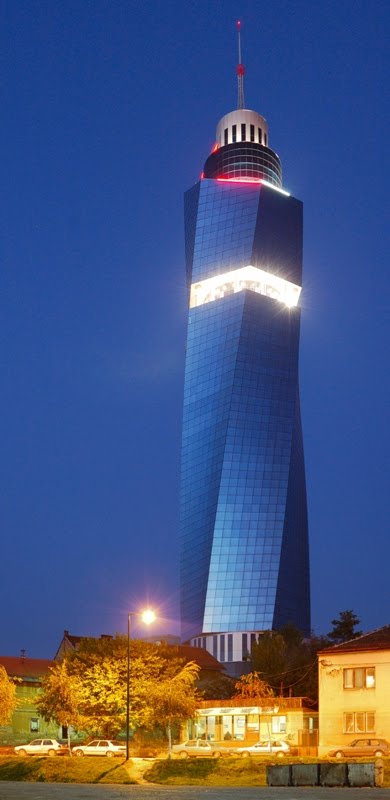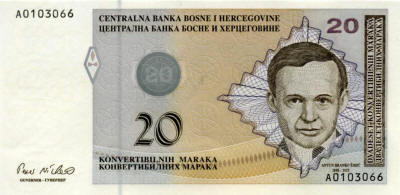There have been many cave drawings and engravings that have
been preserved from the primitive times. Archaeologists and local peoples have
also found decorated plates and bronze necklaces that date back to the Bronze
Age. Roman art and architecture made its way across the Adriatic, as well as
influences from nearby Greece as well.
When the Ottomans entered the area, they not only introduced
their religion, their cuisine, and their language, they also had a major
influence on its art and architecture. Mosques, bath houses, and public
fountains started popping up across the country and Islamic art filled these
areas and people’s homes. Bridges are really important to the Ottoman and to Islamic architecture. Arabic and Persian calligraphy was also really
popular in Bosnia and Herzegovina. (I discovered some pretty cool pictures of
Arabic calligraphy when we did Bahrain.)
After Bosnia-Herzegovina became part of the Austro-Hungarian
occupation, the art and architecture scene thrived. New buildings quickly were
erected, in the classical, renaissance, baroque, and gothic styles. Artists
themselves were sent abroad to the main art capitals of Europe: Prague, Paris,
Vienna, Krakow.
By the time that Bosnia-Herzegovina became part of
Yugoslavia, it had already been exposed to the changing art scene and modern
art movements in Europe. Art nouveau, impressionism, expressionism, and
functionalism were utilized by Bosnian artists around this time. During these
communist times, the art scene practically disintegrated, but there were a few
artists who remained popular. Roman Petrović and Jovan Bijelić are two that
leaned toward abstract art, while Karlo Mijić and Vojo Dimitrijević were known
for their paintings.
However, after WWII art started moving towards abstract
art sculptures and later in architecture.
Two of the most iconic buildings in
Bosnia Herzegovina are in Sarajevo: the Holiday Inn, and the Avaz Twist Tower
(one of my favorite buildings – really cool design! – the headquarters of a
large newspaper company).
Bosnia and Herzegovina has a long literary history, starting
with the founder of modern literature, Matija Divković. He was a Franciscan and
wrote a couple of books on religious topics. He later traveled to Venice and
had Bosnian Cyrillic letters cut and molded so that he could print his works.
Antun Branko Šimić is a poet who grew up in Herzegovina. He
tore himself away from traditionalists and developed a name for himself as an
expressionist poet, never really having a large canon of personal works. He did,
however, write a great deal of literary criticism and translations. Many times,
he would use the decasyllabic foot (meaning to have ten syllables per line) and
folk lament style, writing about pain and poverty, life and death, and
Herzegovina. His image is on the 20 KM bank note.
Aleksa Šantić is another poet from the city of Mostar in
Bosnia Herzegovina who wrote over 800 poems during his lifetime. Šantić lived
during the times during the Austro-Hungarian occupation. Many of these poems
were critical of the government and the “Establishment,” hoping for diversity
in social and cultural aspects. He was
highly influenced by Heinrich Heine (who I mentioned when we did Austria) and
translated many of his works.
I actually share a very general and distant tie with the
symbolist poet Jovan Dučić. As a writer, he was more privy to the
dodecasyllable (having 12 syllables per line) and hendecasyllable (having 11
syllables per line) styles that he picked up from the French. Now here’s where
we get to the ties: when Germany invaded Yugoslavia during World War II, Dučić
left the country to escape the war, he came to stay with a relative of his who
was living in Gary, Indiana. (See, he came to the same state that I live in. I
said it was kind of distant.) He later crossed the border and organized an Illinois-based group for Serbian
ex-pats who also escaped the war, only to pass away in Libertyville, Illinois two years after coming
here. (Ironic name for the place where he finally rested.)
 |
| Ok, I really have to say that THAT is some mustache. |
Ivo Andrić is a short story writer and novelist who received
the Nobel Prize in Literature in 1961. He mainly wrote of Bosnian life during
the Ottoman Empire. The novel that put him on the map, The Bridge on the Drina,
was based on a real life bridge near the town of Višegrad on the River Drina
where he grew up. After he was awarded the prize money from winning the Nobel
Prize, he donated all of his winnings to developing and improving the library
system in Bosnia Herzegovina.
Up next: Music and Dance







No comments:
Post a Comment